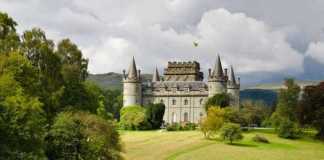Dijon is the capital city of Burgundy in France and is famous for its food and wine. Most people will have heard of Dijon mustard, Burgundy wine, and coq au vin, and you can try them all in the city. However, there is more to Dijon than just delicious cuisine and you will find that it is a vibrant and exciting place to explore. Once ruled by the Dukes of Burgundy, Dijon is a historical city with medieval buildings, monuments, and grand mansion houses, as well as many museums exhibiting Dijon’s past.
The historic centre of the city is a UNESCO World Heritage Site and here you will find narrow pedestrianised streets, interesting shops and Gothic churches. The transport system is excellent in Dijon, with free hop-on/hop-off buses, lessening the need for hiring a car. There is also a tram service that takes you to the surrounding areas, as well as around the city itself. Let’s take a look at the best things to do in Dijon.
Contents
- Dijon, France
- Top Tours
- 20 Things To Do In Dijon
- 6- Shop In Les Halles Market
- 7- Take The Walking Trail, Parcours De La Chouette
- 8- Visit The Musee Rude
- 9- Admire The Well Of Moses
- 10- Take A Stroll Down Rue De La Verrerie
- 11- Try The Local Food And Wine
- 12- Visit The Cathedral Of Saint Benignus Of Dijon
- 13- Have A Relaxing Afternoon In The Darcy Garden
- 14- Explore Liberation Square
- 15- Browse The Boutique Shops
- 16- Visit The Consortium Art Gallery
- 17- Visit The Musée De La Vie Bourguignonne
- 18- Enjoy Port Du Canal And Lake Kir
- 19- Visit The Musee Magnin
- 20- Visit The Arquebuse Botanical Park
Dijon, France
Top Tours
- Dijon: Historic Guided Walking Tour – discover hidden gems in Dijon with an experienced local guide.
- Dijon’s Museum of Fine Arts – lose yourself in a labyrinth of treasures.
- Dijon: La Cave du Palais Burgundy Wine Tasting Experience – do not leave Dijon with tasting local wine.
20 Things To Do In Dijon
1- Visit Musee Des Beaux Arts
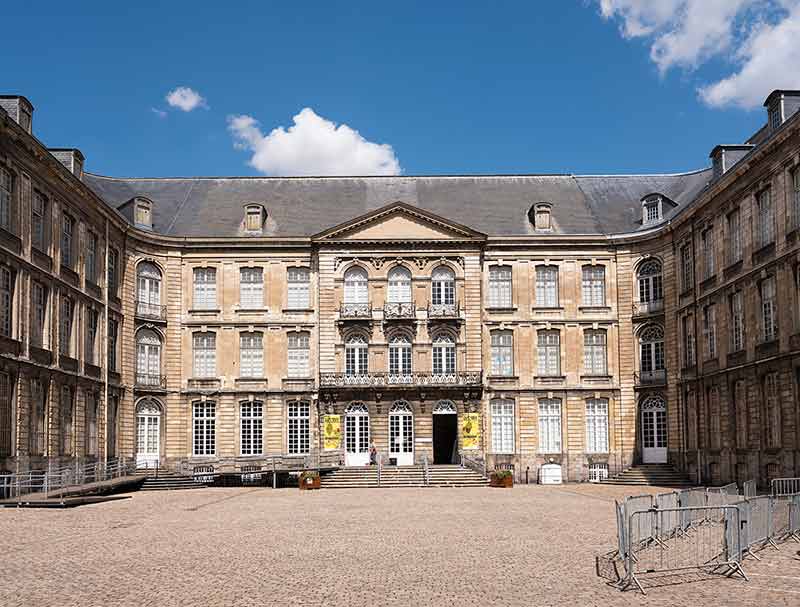
The Musee Des Beaux Arts is one of France’s most important art museums, not only for its collection but for its building in the historic centre of Dijon within the former Palace of the Dukes of Burgundy.
The palace was originally a fortress, rebuilt in 1336, and again in the 15th century in the Gothic style.
In the 17th and 18th centuries, renovations were made in the classical style, and this mixture makes it an impressive building to look at.
The museum houses paintings by artists such as Rubens, Delacroix, Manet, Monet, Gaugin, Picasso and Matisse.
In addition, there are tapestries and sculptures on show.
Also in the museum are the extravagant tombs of the Dukes of Burgundy as well as authentic medieval kitchens which you can tour.
The Musée Des Beaux Arts is at Pl. Des Ducs De Bourgogne, 21000, Dijon. It’s worth joining an organised tour.
2- Climb The Philippe Le Bon
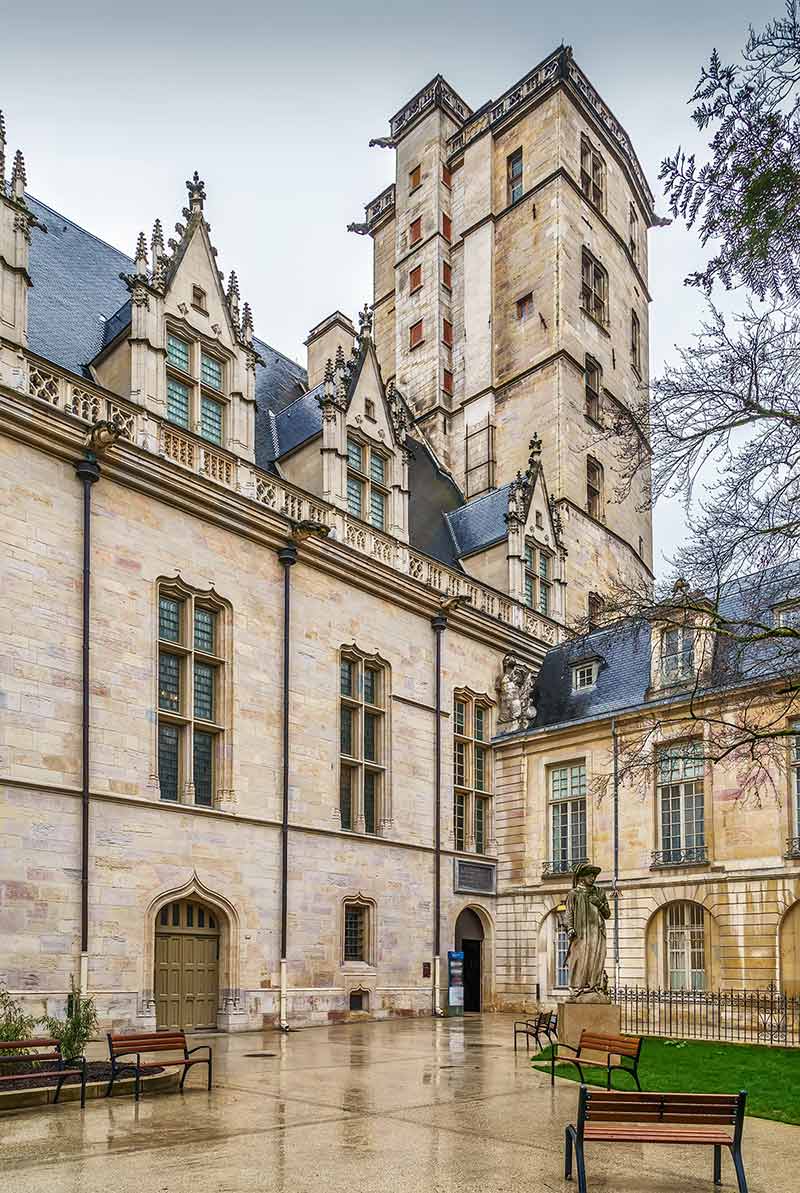
While you are at the Palace of the Dukes of Burgundy, climb the Philippe Le Bon Tower to experience fantastic 360-degree views of Dijon and the surrounding area.
It is 46 m (151 feet) high and has 316 steps to conquer, but it is well worth the effort.
The tower was built between 1450 and 1460 for the Duke of Burgundy, Philip Le Bon, (1396 to 1467) and was originally called Tour de la Terrasse.
Philip reigned between 1419 and 1467 and is considered to be one of the most important dukes of Burgundy because he increased the prestige and prosperity of the region.
He is also known for capturing Joan of Arc and handing her over to the English.
The Philippe Le Bon Tower is at Pl. des Ducs de Bourgogne, 21000, Dijon, and is likely to be one of the places you’ll visit on a historic tour of Dijon.
3- Try Dijon Mustard
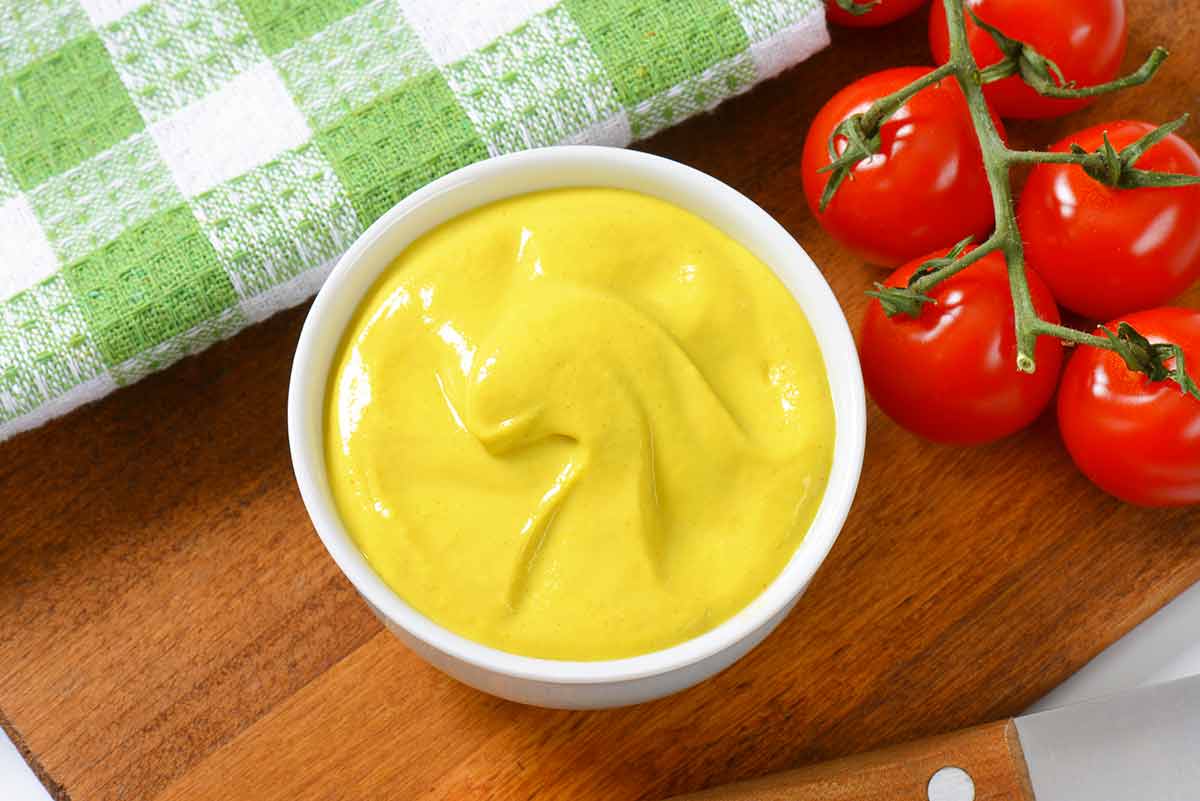
Dijon mustard is famous the world over and you will find several mustard shops in the city.
One of the main brands is Maille, which has a fantastic shop in the historic centre.
Here you will find hundreds of varieties of both traditional and gourmet mustards, as well as vinegars and kitchen accessories.
Some interesting flavours include truffle, hot honey, blue cheese, mushroom and parmesan.
Others contain alcohol, such as whisky and champagne.
You will never think of mustard as being ordinary again, so try different mustards to help you make your choice.
The different mustards are available in small samples which make excellent gifts, or you can get a normal jar and watch the salespeople pour the mustard from a tap.
Maille is at 32 Rue de la Liberte, 21000, Dijon.
4- Visit The Church Of Notre Dame
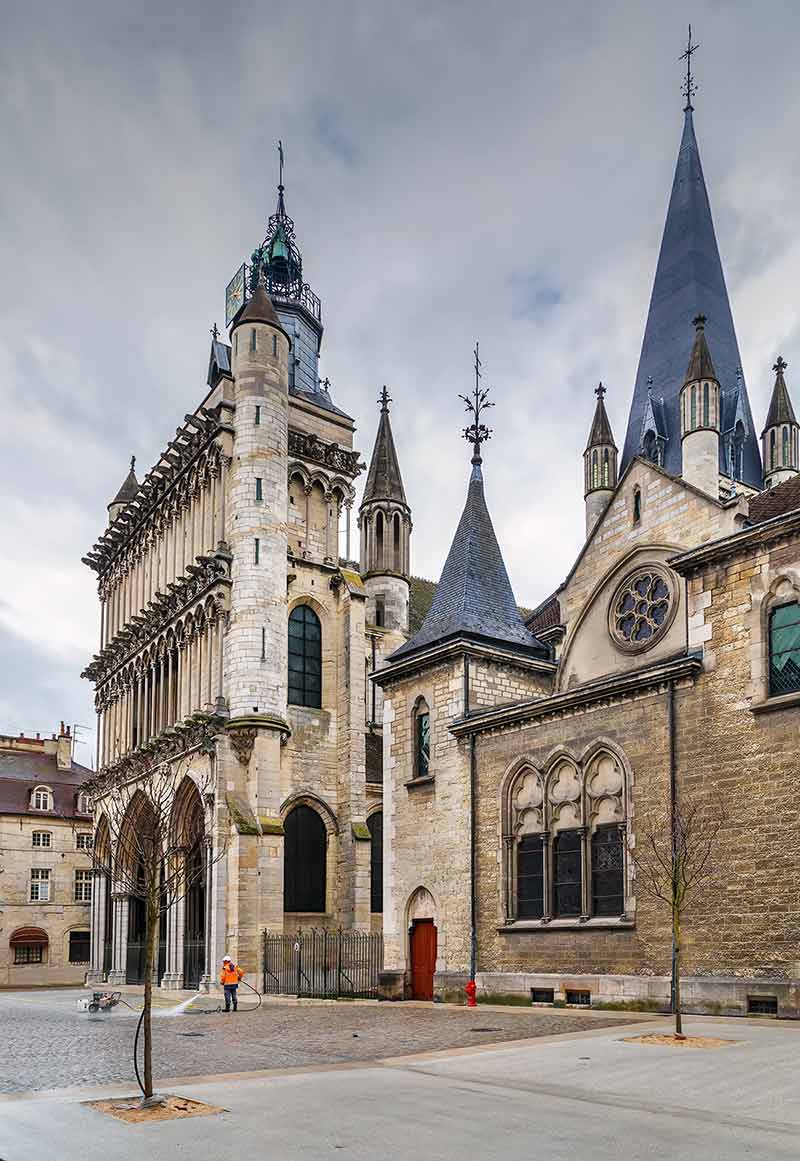
The Church of Notre Dame is also in the historic centre of Dijon, close to the Palace of the Dukes of Burgundy.
The building of the church began in 1230 and it is a stunning example of Gothic architecture.
The facade stands out as it is covered in grotesque gargoyles but the real highlight of the church is the sculpture of an owl on one of the sides.
It is the emblem of the city of Dijon, and it is said that if you touch it with your left hand and make a wish, the wish will come true.
The only way to find out is by trying it out.
The inside of the church has interesting sculptures including the Notre Dame de Bon-Espoir, formally known as the Black Madonna.
The Church of Notre Dame is at 2 Place Notre Dame, 21000, Dijon.
5- Take A Tour Of A Vineyard And Have A Wine Tasting
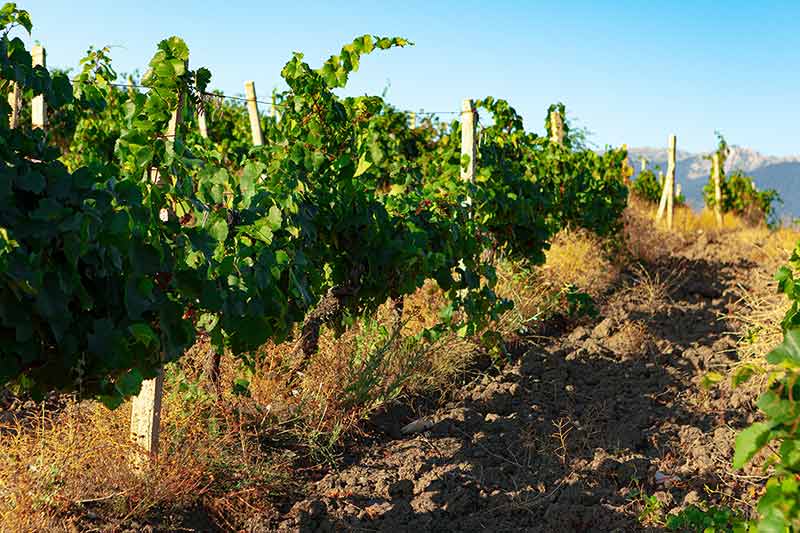
If you enjoy a glass of wine, you will be in for a treat in Dijon as it’s surrounded by vineyards.
Restaurants, cafes and bars all serve wines produced in the region.
You can visit local vineyards, many of which have wineries where you can taste some of their wines.
Some are only 10 minutes away by car, but I suggest that you take an organised tour so that you can enjoy the wines without worrying about driving under the influence.
Tours can last for an hour or so, but you can take a day tour where you will visit different wineries and have a meal.
One of the best wineries is Le Clos de la Perriere which is 20 minutes away from Dijon.
It is located in a 12th-century monastery and you can tour the cellars where there is a former mediaeval wine press.
You will be able to taste a selection of wines, including a Premier Cru, which is one of the best wines in the area.
6- Shop In Les Halles Market
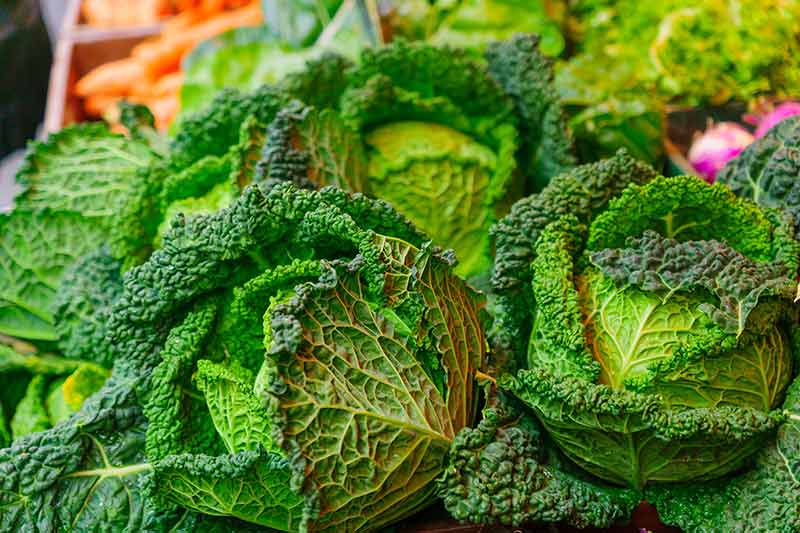
If you want to mix with the locals, head to Les Halles Market in the historic district of Dijon.
Here you can buy fresh produce, try different cheeses and charcuterie, and purchase bottles of local Burgundy wine.
The smells are fantastic and the atmosphere is buzzing.
You can even get meals to go, such as boeuf bourguignon and coq au vin.
The market doesn’t open on Sundays, Mondays or Wednesdays.
On the other days, it is open until 1.30 pm but be sure to get there early as the best produce goes quickly.
On Thursdays, the market is just inside the hall while on other days, it spills out onto the streets.
Les Halles Market is at 16 Rue Odebert, 21000, Dijon.
7- Take The Walking Trail, Parcours De La Chouette
There is an easy way to explore the historic centre of Dijon and see all the important sights by taking the walking trail, the Parcours de la Chouette.
It is a series of 22 steps which are on paving stones, featuring bronze arrows and the iconic owl from the Church of Notre Dame.
It takes about an hour to follow the route, although it will be longer if you decide to explore any of the attractions along the way.
The route begins on the Rue des Forges where you will see some stunning private mansion houses.
Among other places, it takes you to the Church of Notre Dame, the mediaeval Rue Verriere, the Palace of the Dukes of Burgundy, and the stunning Gothic Cathedral of Saint Benignus.
8- Visit The Musee Rude
Musee Rude is housed in the church of Saint-Etienne, which was constructed in the 11th century and showcases artwork created by the sculptor Francois Rude.
His most famous work was ‘The Marseillaise’ which is on the Arc de Triomphe in Paris.
In the museum, you will see plaster casts of his most famous sculptures, some of which are in the Louvre in Paris.
In addition, the museum houses a crypt from the 11th century, as well as the Ancient Roman Saint Stephen’s gate, dating back to the third century.
9- Admire The Well Of Moses
One of Dijon’s most striking monuments is The Well of Moses, which is well-worth going to see either on your own or on a tour with an experienced guide.
The Duke Of Burgundy, Philip the Bold, commissioned the sculpture in the late 14th century and it was created by the Dutch artist, Claus Sluter.
The Well of Moses features six prophets – Moses, Isaiah, Daniel, Zechariah, Jeremiah and David – who represent the fountain of life.
The sculpture took eight years to create, from 1395 to 1403, and it is in the Carthusian monastery of Chartreuse de Champmol.
10- Take A Stroll Down Rue De La Verrerie
Take a trip to the past by walking along Rue de la Verrerie, which is a street filled with half-timbered buildings dating to the 15th century.
The highlights are the shop signs which are still on the buildings, even though they’re not these shops anymore.
Because most people couldn’t read in the 15th century, the signs were symbols, so have fun trying to work out what the shops were.
The street has had many different names, depending on which shops took precedence.
At one time, it was known as Serge Street because the cloth, serge, was produced in many shops along the street.
Finally, it was named Rie de la Verriere because several glassmakers set up shop.
Nowadays, you can find interesting antique shops along Rue de la Verrerie, as well as cafes spilling onto the street.
11- Try The Local Food And Wine
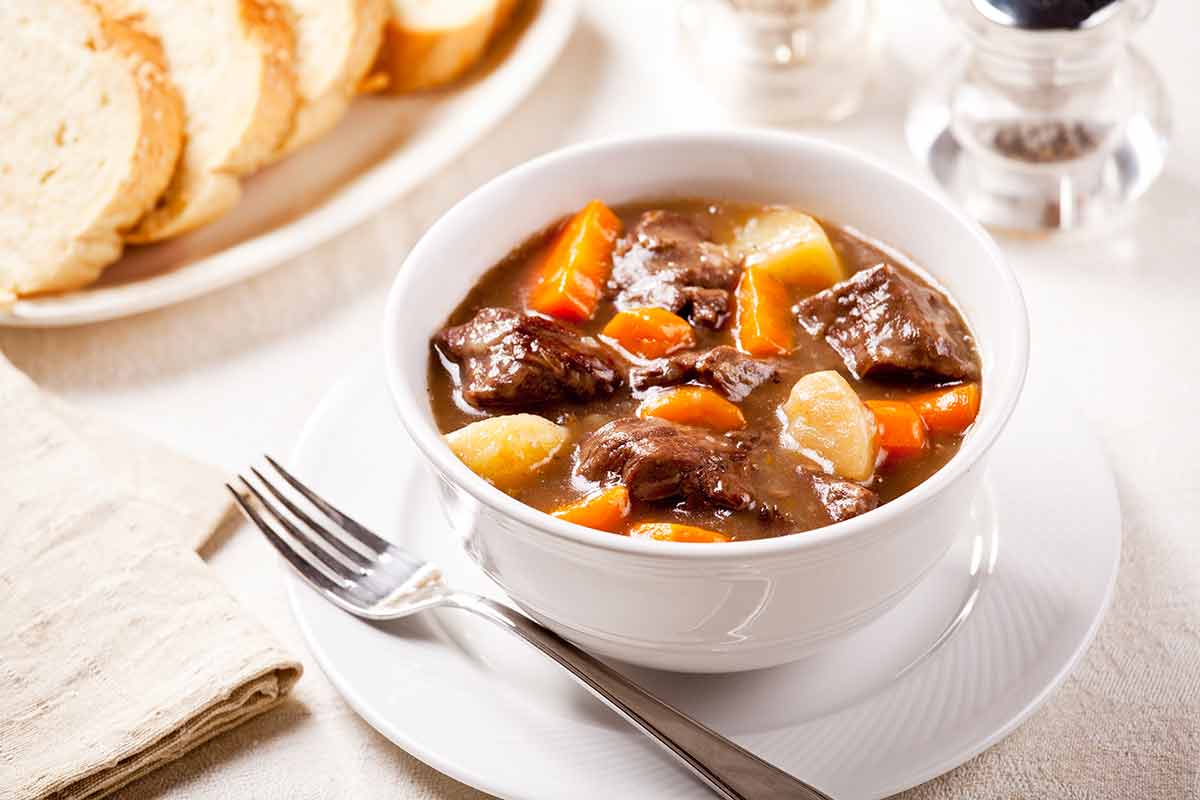
Many French dishes originated in Dijon, including boeuf bourguignon, which is beef stew with a red wine sauce, and coq au vin, chicken cooked with red wine, mushrooms and pancetta.
The medium-bodied Burgundy or Pinot Noir pairs well with both dishes.
Cuisses de grenouille (frogs legs) and escargots (snails) are also popular.
Dijon has a famous egg dish called oeufs en meurette, which is poached eggs with a sauce of red wine, lardons, fried shallots and mushrooms.
When it comes to sweet treats, gingerbread is popular in Dijon and dates back to the 14th century.
One of the popular styles is ganache gingerbread, which is layers of gingerbread filled with chocolate ganache.
The best place to get gingerbread from is Mulot & Petitjean who have four shops in the city.
It has the oldest gingerbread factory in Dijon, having been set up in 1796.
I have already mentioned wine, but creme de cassis is another popular drink in the city.
It was created by the grape pickers who were just given the bottom-of-the-barrel wine for their efforts.
It wasn’t drinkable, so they created a blackcurrant liqueur to add to it, and so crème de cassis was created.
It has become a popular drink and is delicious when added to a glass of white wine.
Even better, is the Kir Royale, which is creme de cassis and champagne.
12- Visit The Cathedral Of Saint Benignus Of Dijon
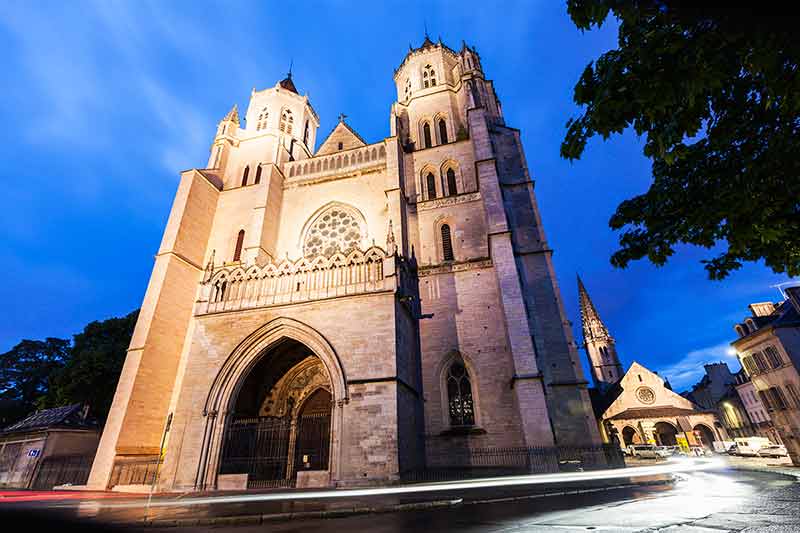
This is a beautiful Gothic cathedral built between 1280 and 1325 dedicated to Saint Benignus in 1393.
He was a missionary who spread Christianity throughout many regions of France.
The cathedral has a crypt underneath the building which is one of the earliest Christian sanctuaries in France.
It houses the remains of the saint.
The cathedral has an unusual story surrounding it.
In the 1950s, the locals gathered there to burn an effigy of Father Christmas, protesting against what they believed to be the secularisation of Christmas.
Even children cheered as Santa was burned.
The Cathedral of St. Benignus of Dijon is at Pl. Saint Benigne, 21000, Dijon. This tour will get you there.
13- Have A Relaxing Afternoon In The Darcy Garden
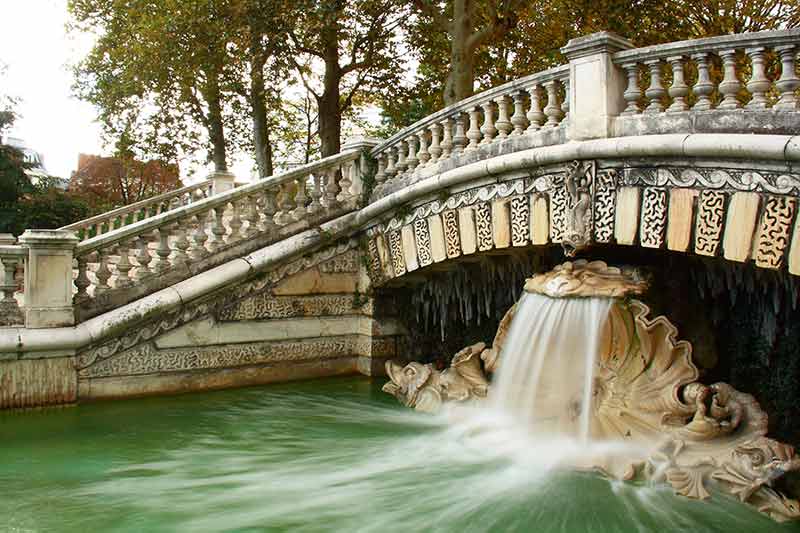
If city life is getting too much for you, head to the Darcy Garden to relax in a beautiful green space.
Here you will find many native and exotic hardwoods, conifers and shrubs, as well as well-manicured flower beds.
The garden was created in the 1880s by the engineer, Darcy, after whom the garden has been named.
It was built around a reservoir, and you will find ponds, waterfalls, and a large fountain as well as a sculpture of a polar bear created by the Burgundian sculptor, Francois Pompon.
If you have children with you, they will enjoy the vintage carousel in the garden and in the summer, you can take a break in the seasonal cafe.
14- Explore Liberation Square
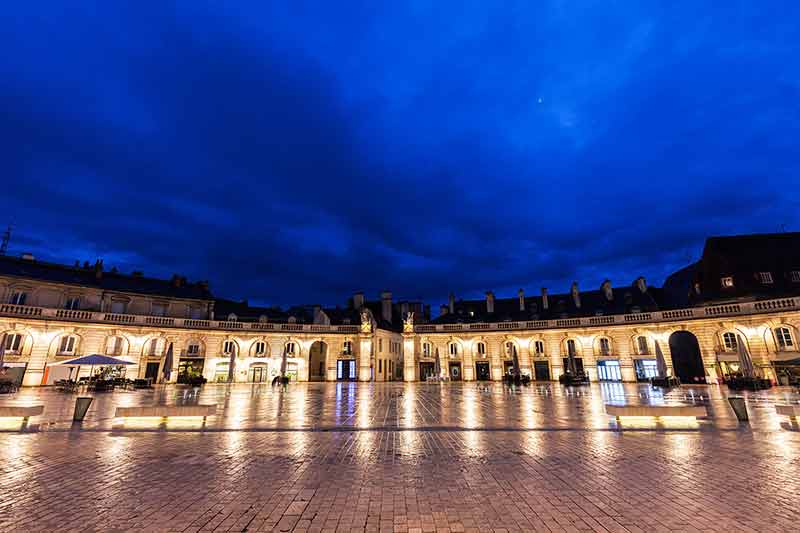
Liberation Square is one of the highlights of Dijon.
It is a semi-circular plaza and is where the Grand Palace of the Dukes of Burgundy is situated.
Not only will you be able to enjoy this fabulous building, but fountains and statues dating back centuries can also be seen.
The square was completed in 1686 and became known as the Royal Square.
A statue of Louis XIV was placed in the centre, but this was destroyed during the French Revolution.
In the years after, it changed names many times before being given the name Liberation Square in 1944, after Dijon had been liberated from German occupation.
The square is pedestrianised and is now a popular spot with both locals and visitors.
There are several cafes and bars which spill out onto the square where you can enjoy a drink or a meal while people-watching.
15- Browse The Boutique Shops
Fashion is as famous in France as is food and Dijon is no exception.
It has both high-end boutiques and familiar chain stores.
The main street in the historic district is the pedestrianised Rue de la Liberte, and here you will find popular stores such as H & M and Calzedonia, as well as the Galeries Lafayette department store which houses luxury brands, such as Gucci and Michael Kors.
If you need a break from shopping, there are cafes and restaurants along the street.
The Rue des Forges is another popular shopping street.
If you are looking for a sweet treat, there are some superb chocolate and pastry shops to be found here.
16- Visit The Consortium Art Gallery
If you like contemporary art, this gallery will suit you down to the ground.
It houses more than 250 works of art by contemporary international artists, most painted in the early days of their careers.
Paintings by artists such as Mosset, Toroni, Boltanski, and Messager can be viewed.
The collection is regularly loaned to other galleries, allowing temporary exhibitions to take centre stage.
Both solo and collections of international artists are exhibited at these times.
The Consortium Art Gallery is at 37 Rue de Longvic, 21000, Dijon.
17- Visit The Musée De La Vie Bourguignonne
This museum will interest young and old.
It depicts life in Burgundy in the past and is a collection gathered by M. Perrin de Puycousin at the end of the 19th century.
The museum houses household items, tools, furniture and clothes on mannequins.
Shops and rooms have been recreated to look as they did in the 19th century.
You will find a chemist, a grocer, a butcher, a clockmaker, and a toymaker, amongst others.
The museum has a section dedicated to the history of mustard, a condiment dear to the hearts of the people of Dijon.
The museum also tells you about the local crafts that were practised in the city, such as stonework, woodwork and clay.
The Musée de la Vie Bourguignonne is at 17 Rue Sainte-Anne, 21000, Dijon.
18- Enjoy Port Du Canal And Lake Kir
If you enjoy being close to the water as I do, both the Port du Canal and Lake Kir are lovely places to go and get away from the hustle and bustle of city life.
The Port du Canal used to be a river trading port on the Burgundy Canal in the 19th century.
Now it is a marina and is a nice place to go to see the different boats and the swans.
Lake Kir is an artificial lake just south of the city fed by the Ouche Rover and covers 37 hectares (91.4 acres).
It has a walking trail around it and you can boat, fish and swim.
The lake is close to vineyards so is also a popular place for wine tasting.
19- Visit The Musee Magnin
Another interesting art museum in Dijon is the Musee Magnin which is housed in a 17th-century mansion previously owned by Jeanne and Maurice Magnin.
They gave their house and collection of Burgundian art to the city and now you can tour the house which showcases around 2,000 pieces of artwork.
The museum also has a collection of 16th-century frescoes with both religious and mythological scenes, as well as sculptures dating back as far as Ancient Greece and Rome.
If you want to learn more about the artwork, take a guided tour of the museum.
The museum also has a cafe where you can enjoy traditional French cuisine.
The Musée Magnin is at 4 Rue des Bon Enfants.
20- Visit The Arquebuse Botanical Park
The Arquebuse Botanical Park is not only a botanical park, but it also houses the Natural History Museum and the Planetarium.
The Hubert Curien Planetarium will delight old and young alike.
It is completely digital and immerses you in a 360-degree projection of outer space.
The botanical garden houses around 4,000 species of plants and trees, emphasising the flora of the region.
You will find an arboretum, greenhouses, and a herbarium which has a massive display of 100.000 specimens.
Your children will love the many ducks, geese, and swans which inhabit the park.
The Arquebuse Botanical Park is at 1 Avenue Albert-Premier, 21000, Dijon.
For more about France, read:
- 30 France Landmarks
- 26 French Shows On Netflix
- 20 Castles In France
- 20 Beaches In France
- 20 Drinks In France To Try
- 20 Beaches In French Riviera
- 20 Amazing French Cities
- Food in France – 20 Dishes To Try
- Best Time To Visit France
- 15 Things France Is Famous For
- 20 Things To Do In Bordeaux
- 20 Luxury Hotels in Bordeaux
- 20 Things To Do In Marseille
- 20 Luxury Hotels in Marseille
- 20 Things To Do In Le Havre
- 20 Things To Do In Toulouse
- 20 Things To Do In Nantes
- 20 Things To Do In Dijon
- 15 Things To Do In Nice
- 15 Things To Do In Lyon
- 20 Paris Landmarks
- 20 Things To Do In Paris At Night
- Le Marais Walking Tour
- 20 Paris Tours
- Lost in Paris
- L’Hotel Paris Review
- 20 Best Day Trips From Paris
- 20 Paris Winter Attractions
- 20 Paris Museums
- 20 Things To Do In Saint Tropez
- 20 Things To Do In Lille
- 17 Luxury Hotels in Lille
- 20 Things To Do In Strasbourg
- 20 Things To Do In Grenoble
- 20 Things To Do In Montpellier
- 20 Things To Do In Reims
Plan Your Trip

Rent A Car – Find the best car rental rates at Discover Cars. They compare car hire companies to provide you with the best deal right now.

Find A Hotel – If you’re curious about this article and are looking for somewhere to stay, take a look at these amazing hotels.
